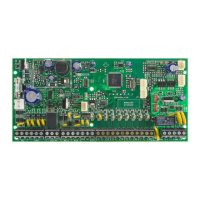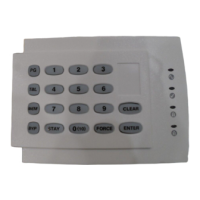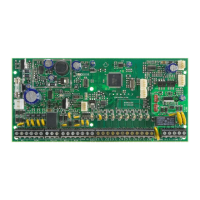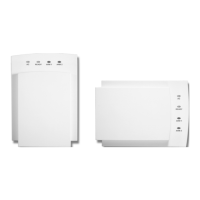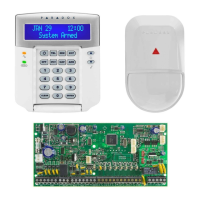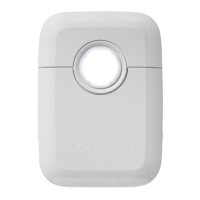
Do you have a question about the Paradox SP7000 and is the answer not in the manual?
| Partitions | 2 |
|---|---|
| Event Buffer | 256 events |
| Wireless Zones | 32 |
| PGM Outputs | 2 |
| Compatibility | Paradox modules and accessories |
| Communication | GSM, IP |
| System Type | Hybrid |
| Power Supply | 16.5VAC |
| Backup Battery | 7Ah |
| Bus | 4-wire (Digiplex EVO) |
Configuring entry delay, exit delay, and bell cut-off times.
Setting the system time and date.
Establishing communication with WinLoad software for system management.
Setting up personal phone numbers and pager numbers for communication.
Initiating a test report to the monitoring station.
Setting automatic arming schedules for partitions.
Procedure to remove lost remote controls from the system.
Configuring siren behavior and exit delay settings.
Understanding auditory and visual feedback from the keypad.
Explanation of keypad indicator lights and essential keys.
Dividing the alarm system into two distinct areas, Partition 1 and Partition 2.
Procedure to turn StayD mode on and off.
Switching between Stay, Sleep, and Full arming modes.
Procedures for leaving and entering the site in different modes.
Window Mode, Re-arm Delay, and Live View Mode.
Personal identification numbers for system access and programming.
System Master, Partition Master Codes, and Duress Code functionality.
Step-by-step guides for programming and deleting access codes.
Details on Regular, Sleep, and Stay arming methods.
Step-by-step instructions for arming and disarming the system.
Arming the system without an access code using specific keys.
Exiting premises while keeping the system armed.
Setting automatic arming schedules for partitions.
Guide to setting up automatic arming schedules.
Procedures to disarm the system and stop active alarms.
Temporarily ignoring zones and recalling bypass entries.
Keypad display modes and alarm indication.
System response to fire, fire safety tips, and panic alarm functions.
Tips for reducing common household fire causes.
Setting zones to chime on different keypad types.
Disabling keypad beeps and adjusting keypad illumination.
Using programmable outputs for various functions.
Enabling power saving on wireless keypads.
Procedure to view and interpret system trouble conditions.
Explanations for trouble codes and clock reset procedure.
Accessing test reports, PC calls, and WinLoad communication.
Verifying system operation, component health, and battery replacement.
Zone configuration and feature assignment reference.
System partitioning, and setting panic alarm types.
Configuring PGM outputs, utility keys, and delay timers.
Installer details, warranty, limitations, VoIP warnings, and FCC compliance.

